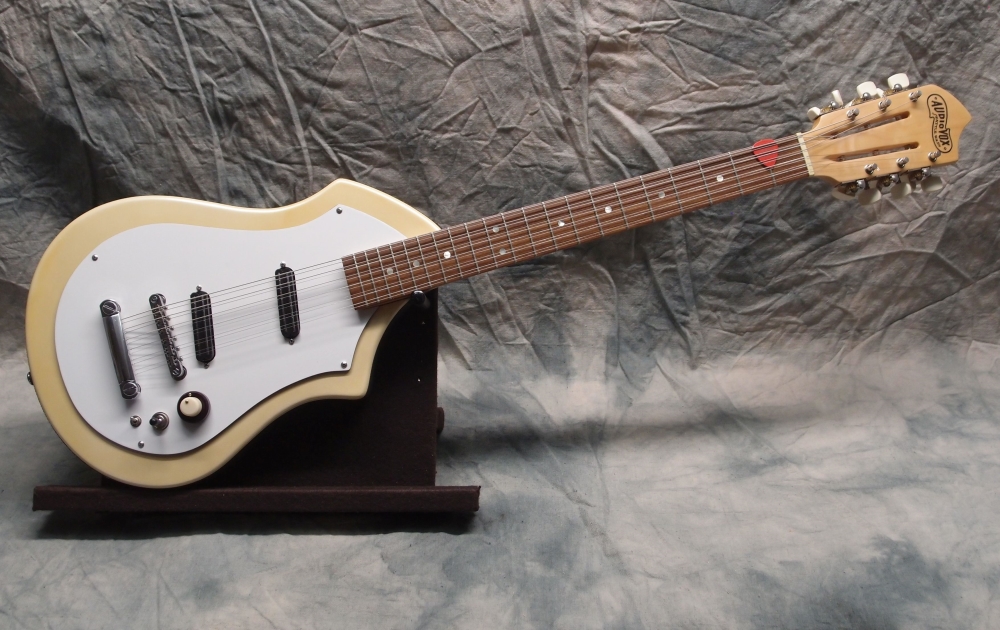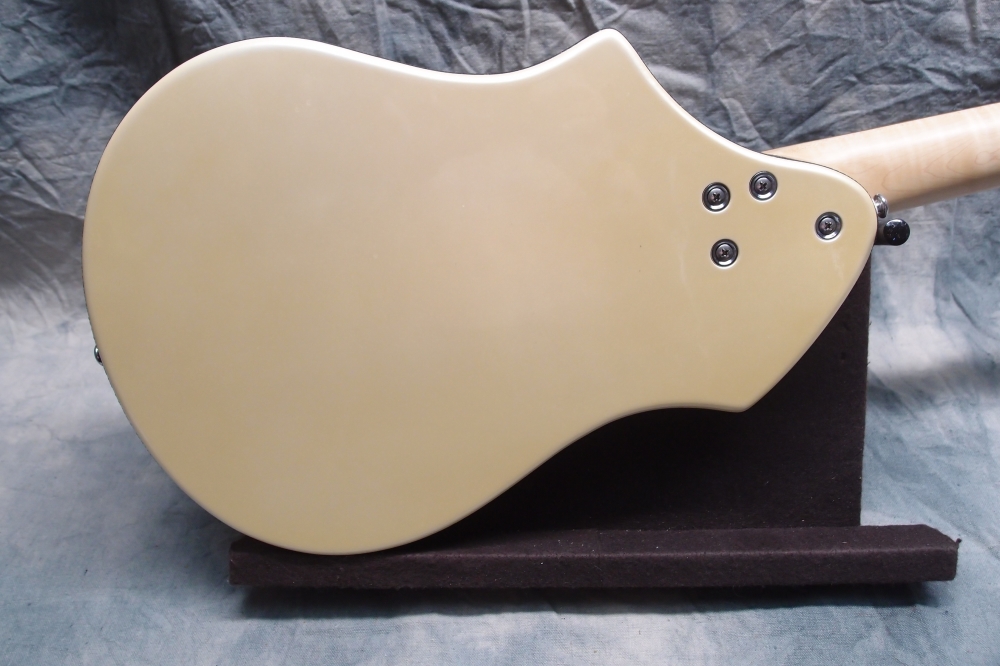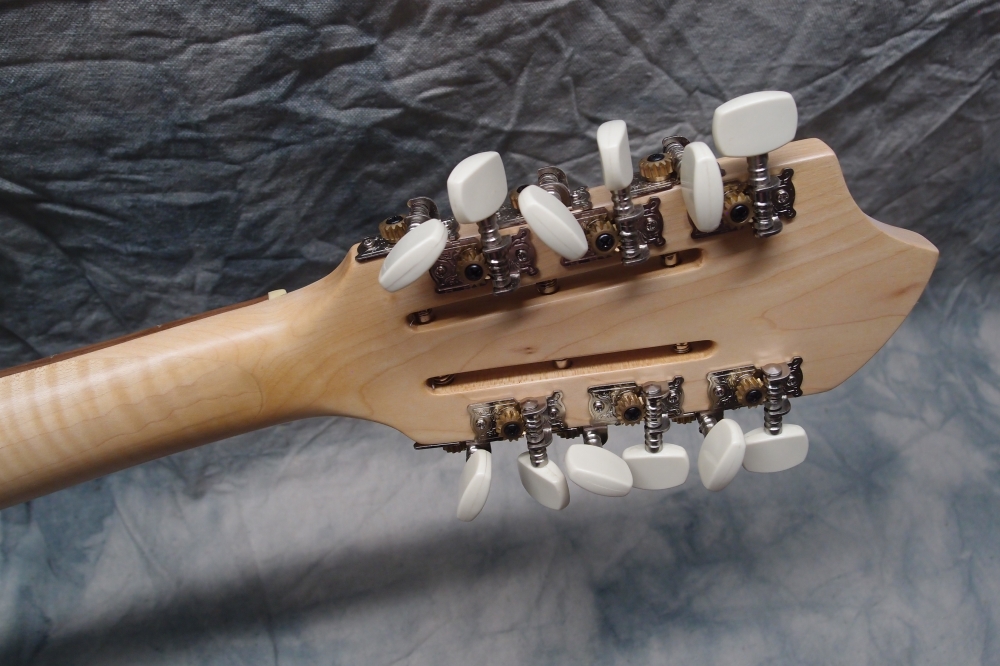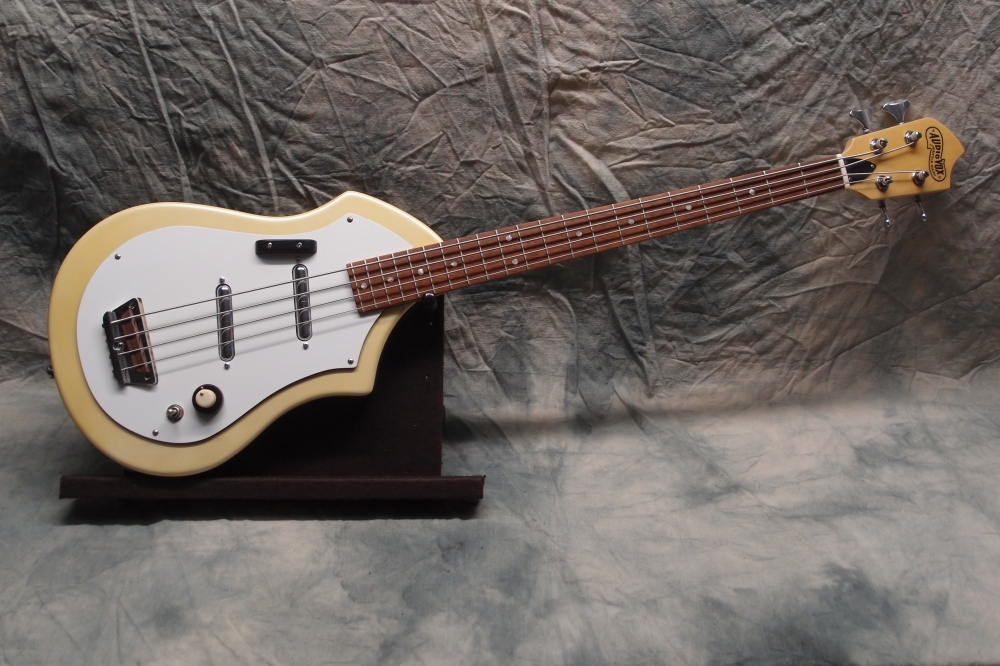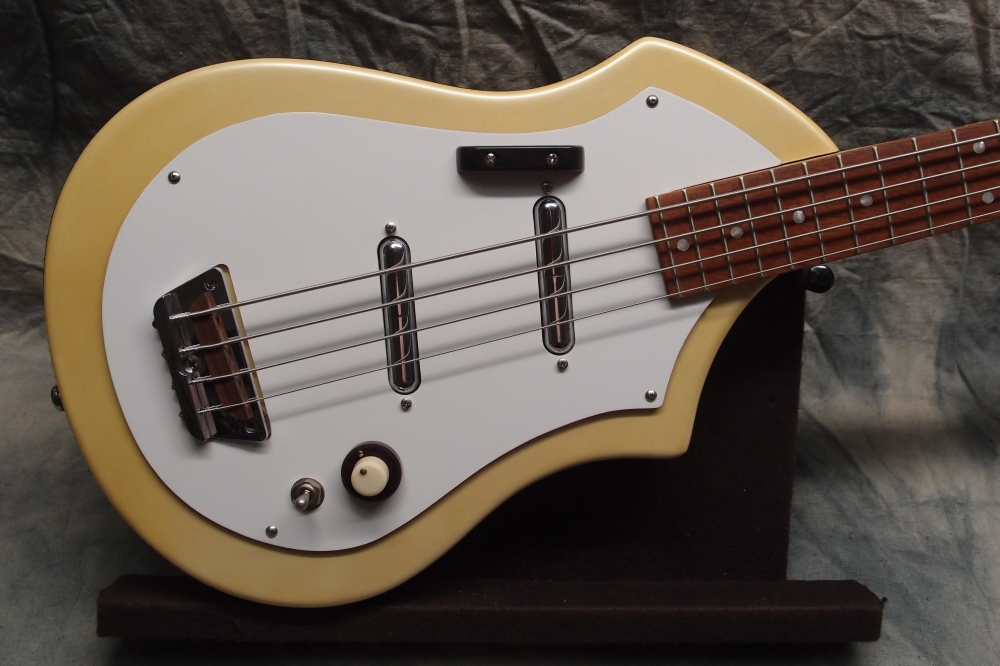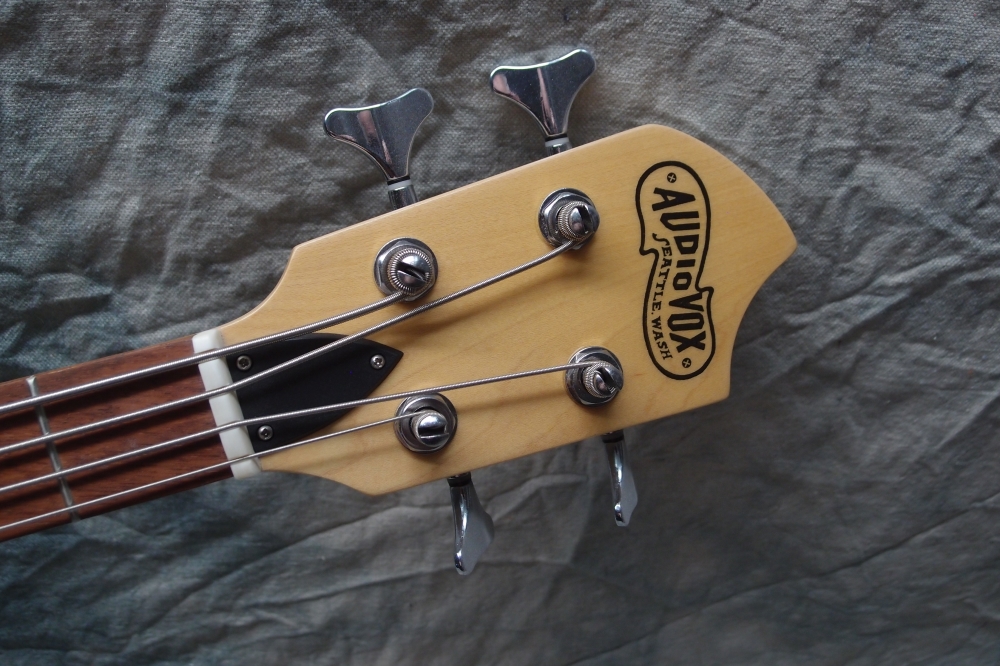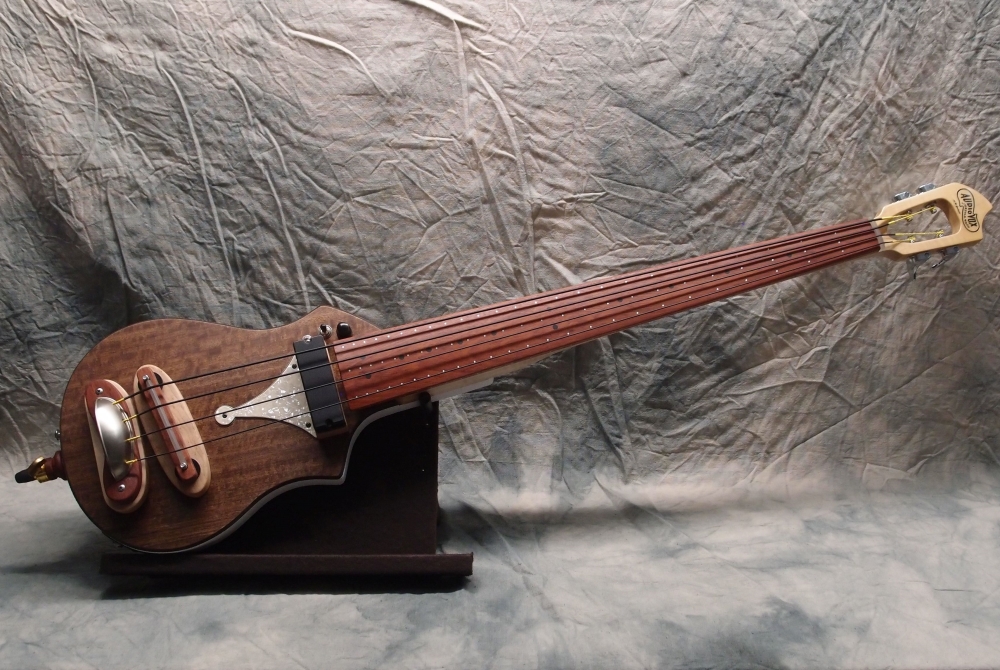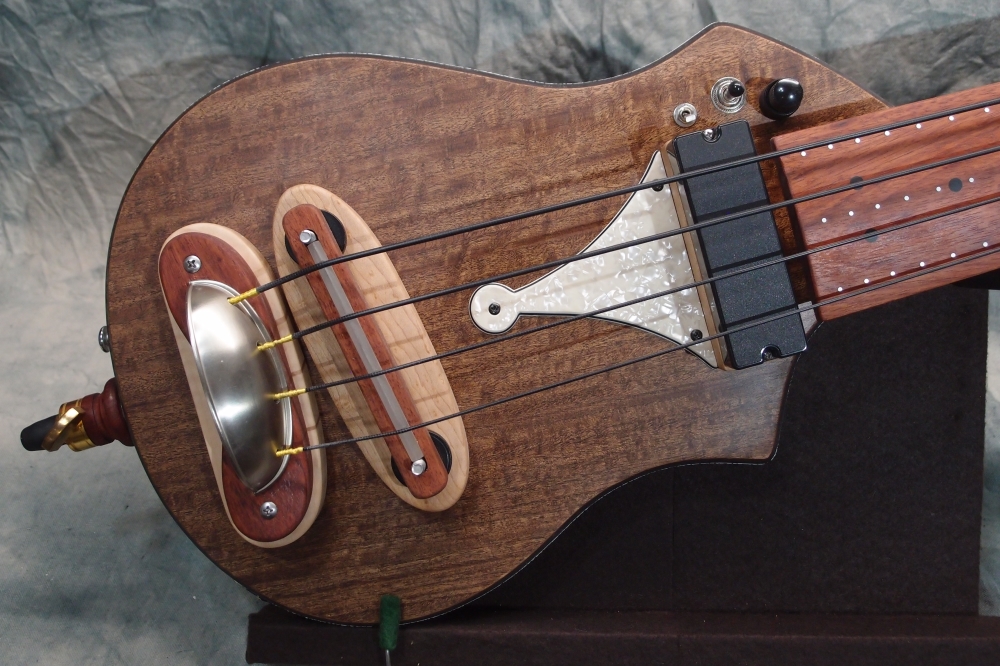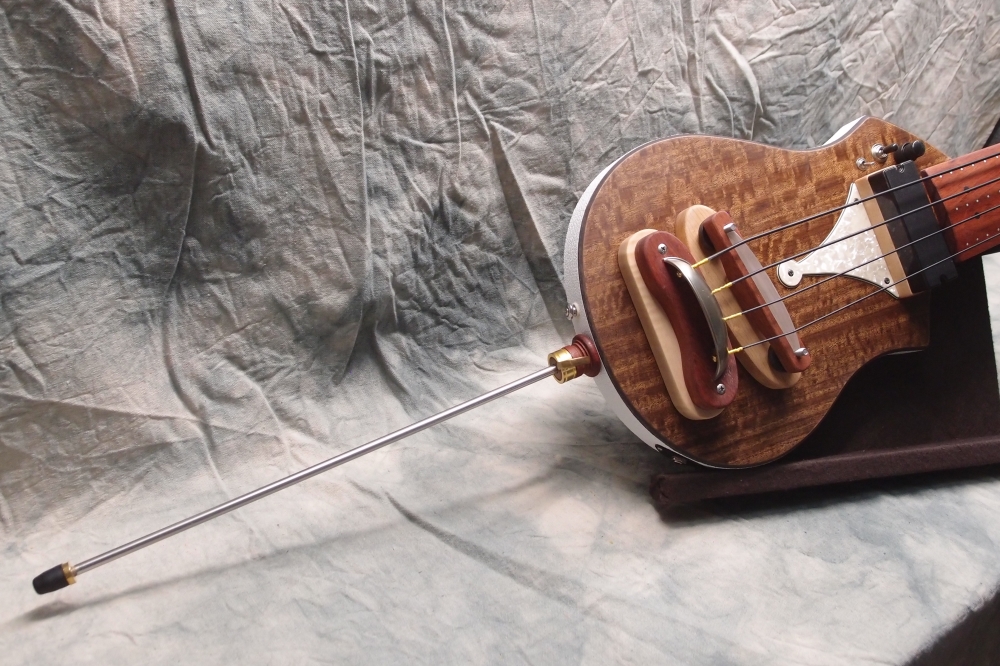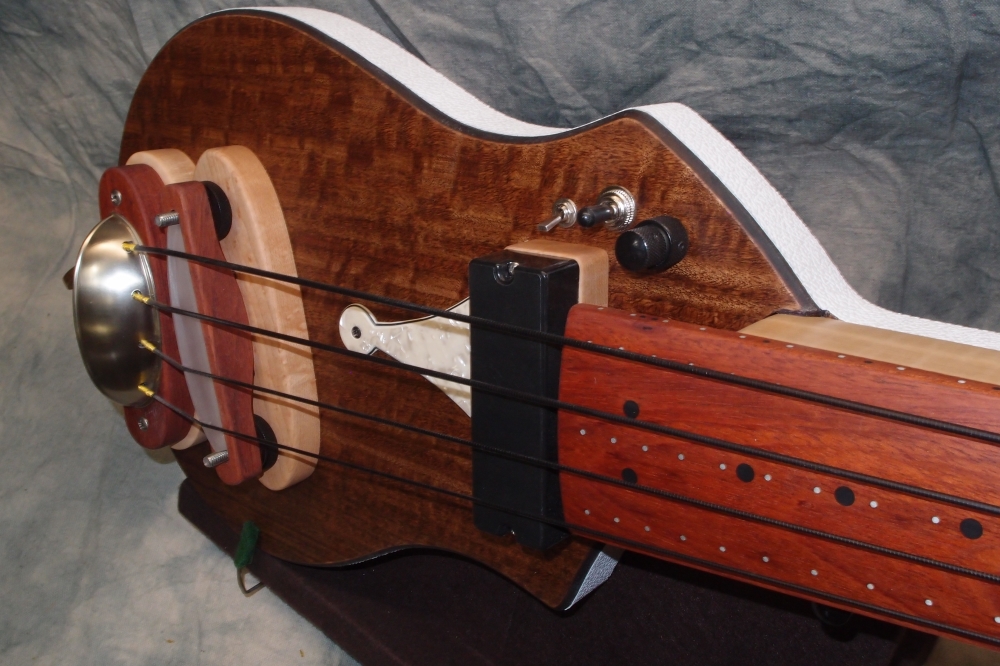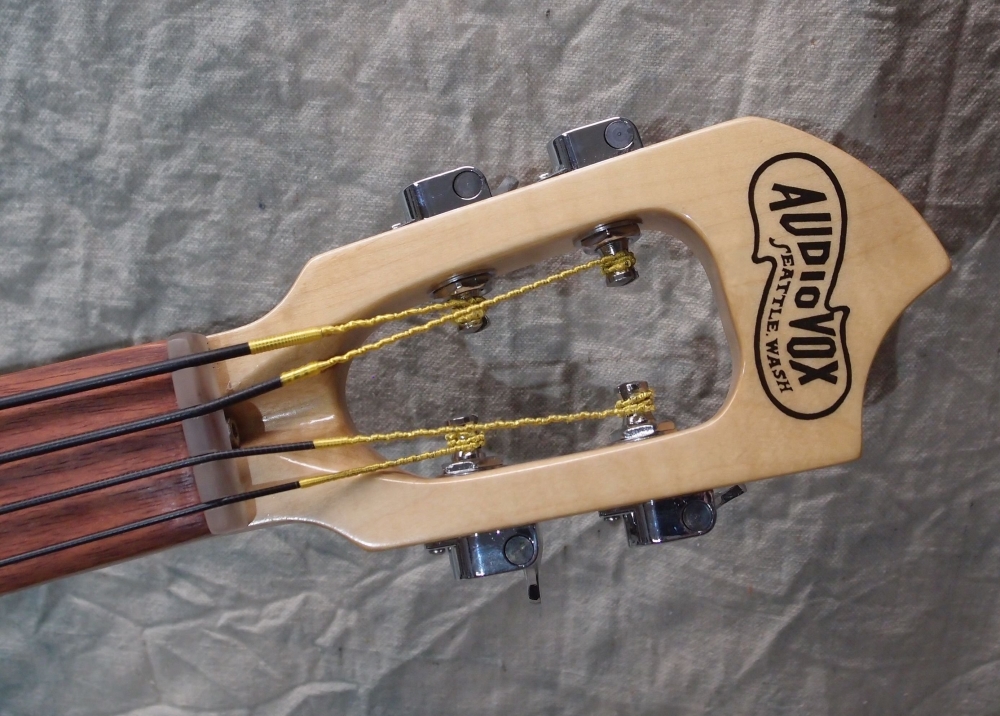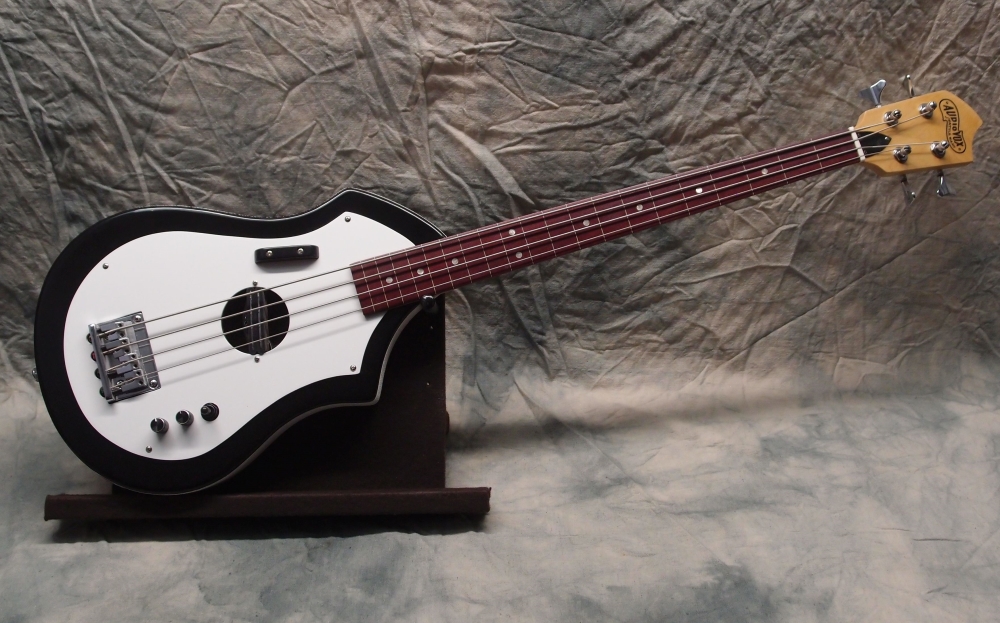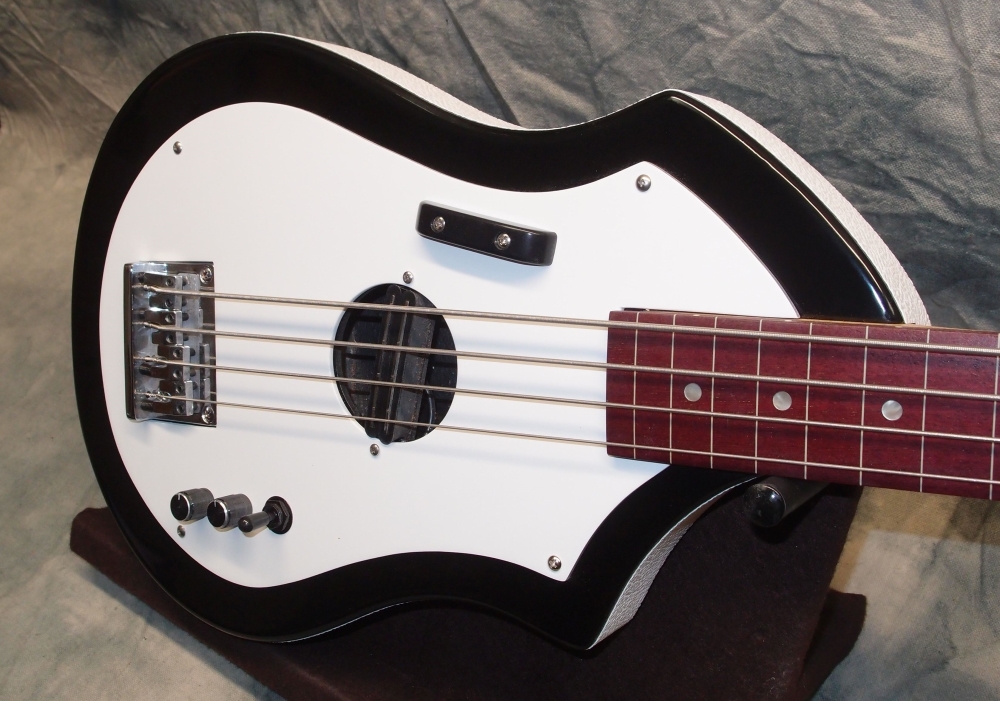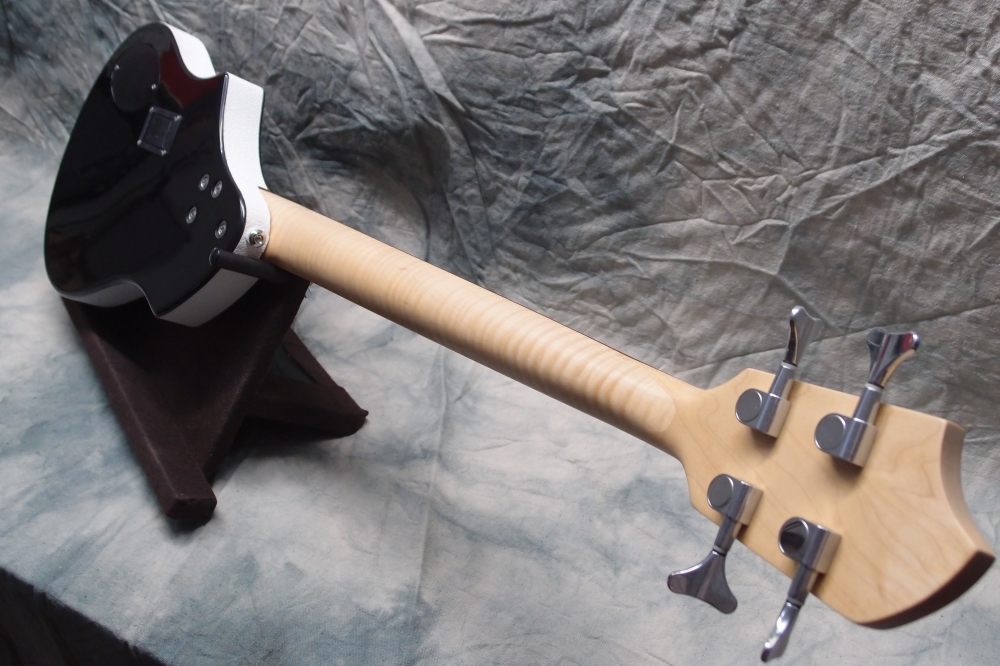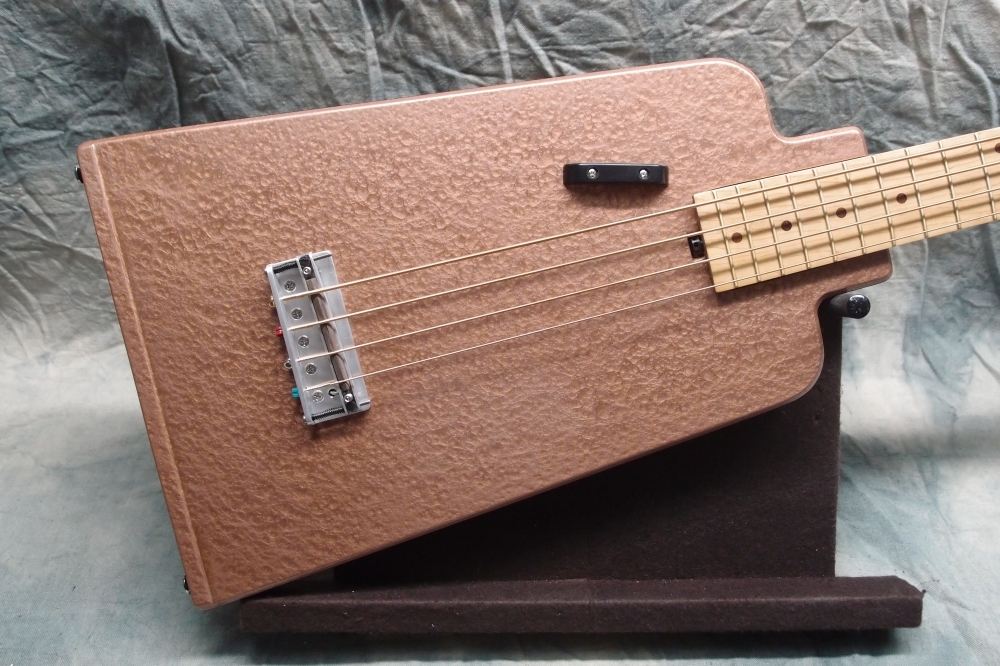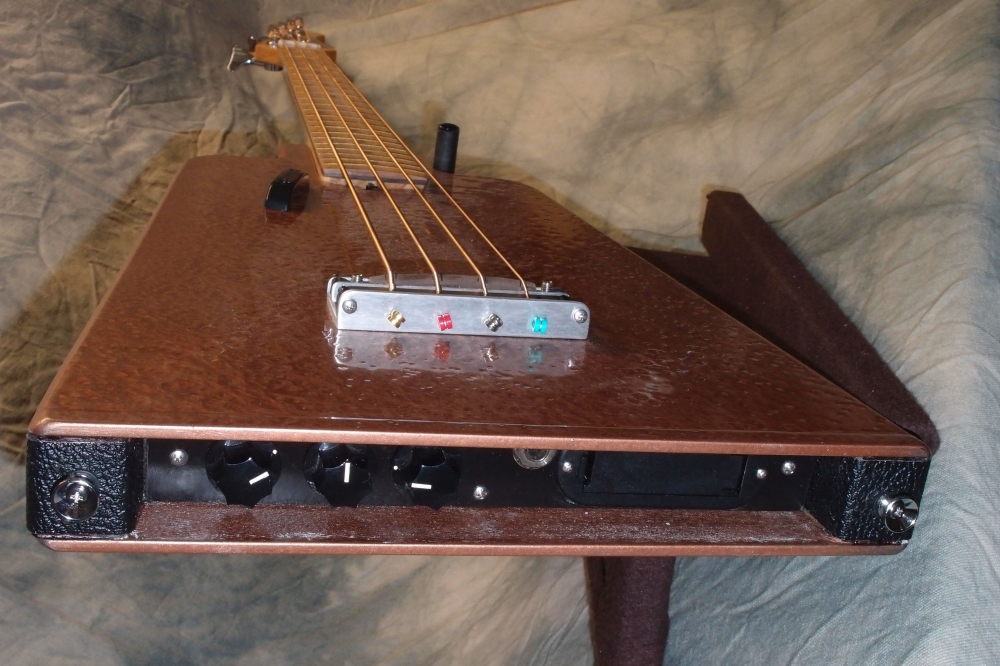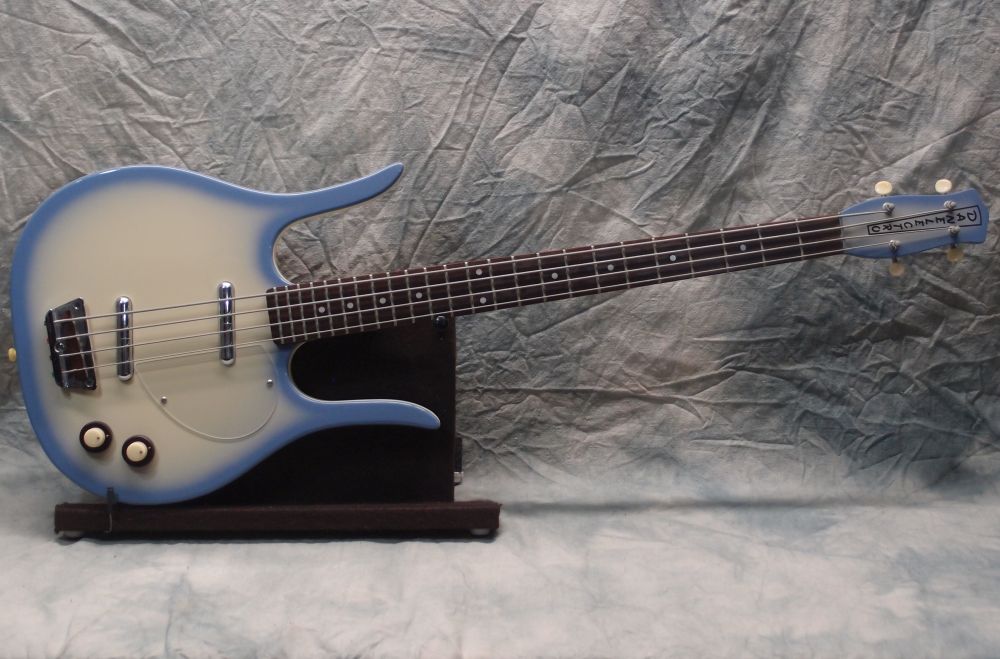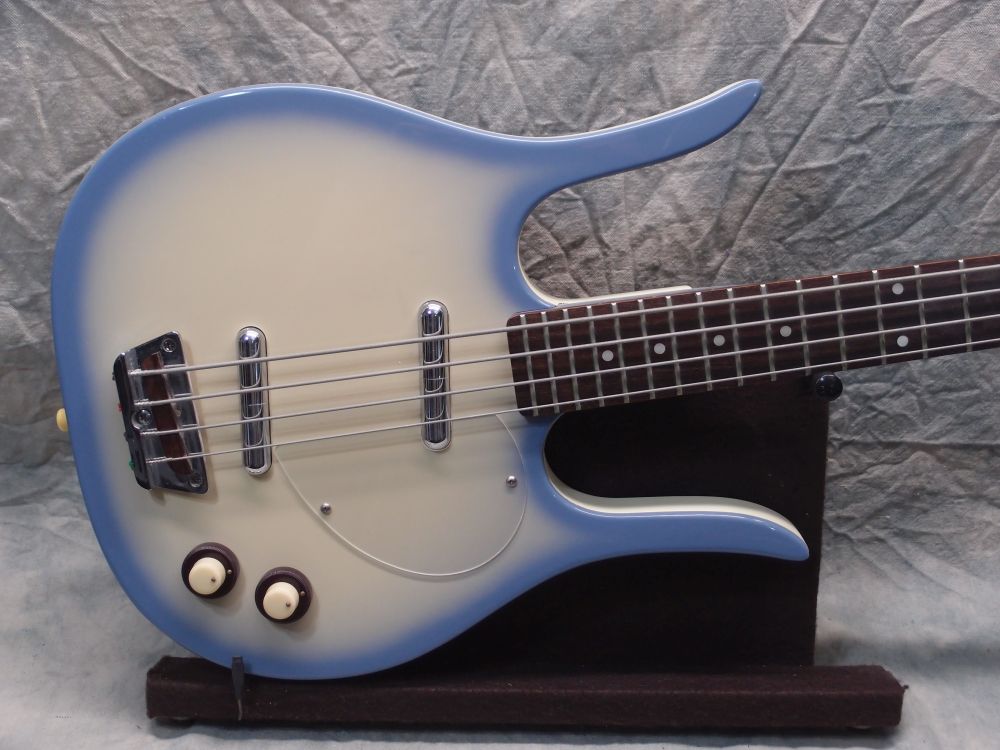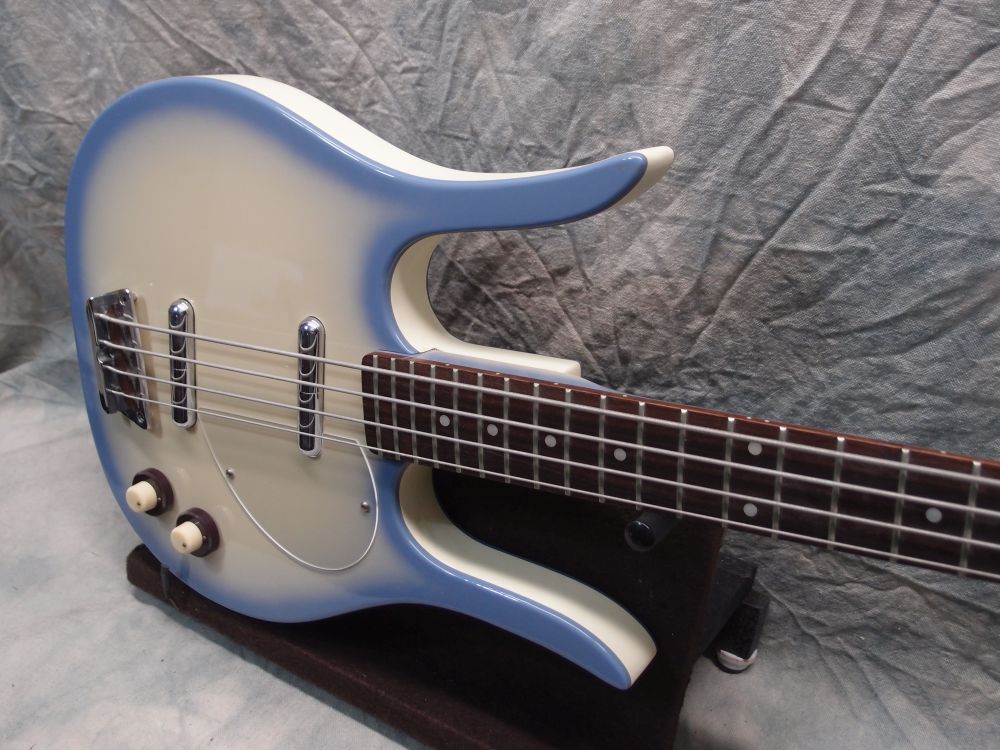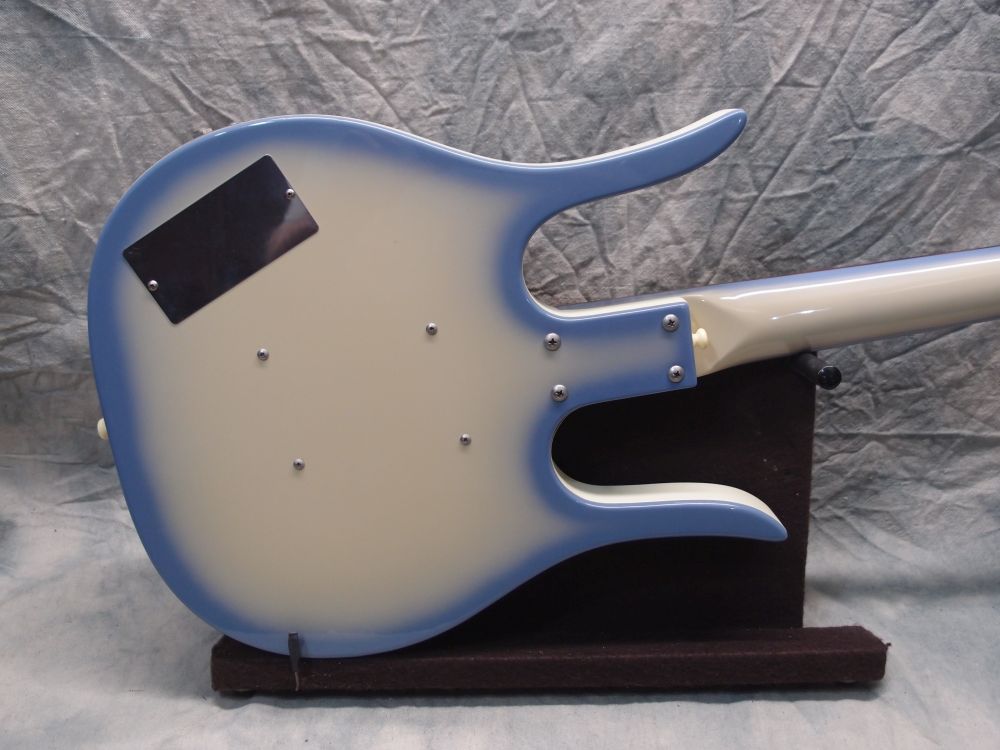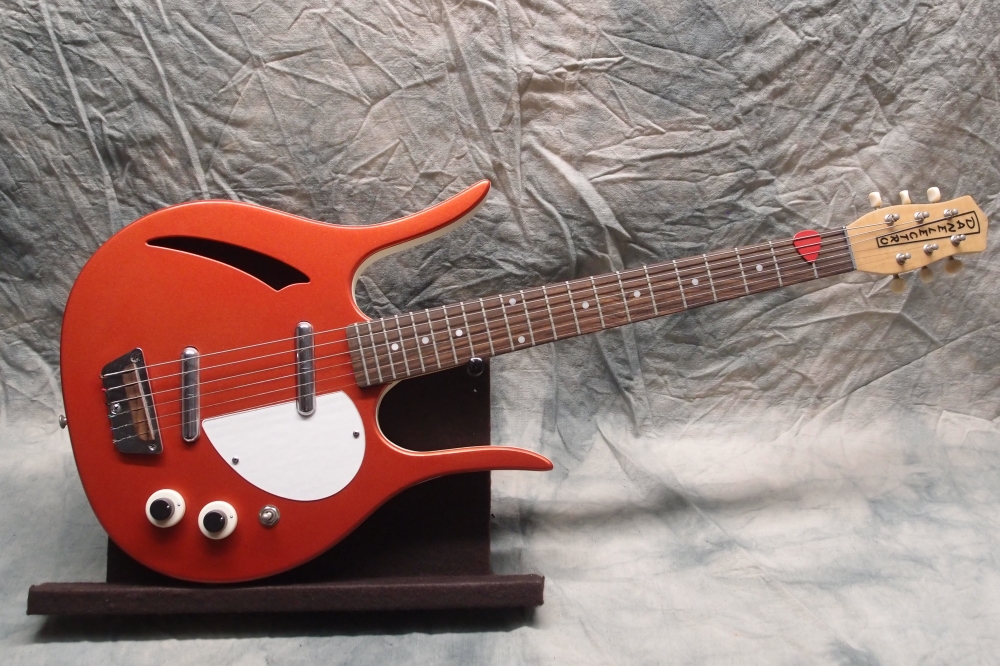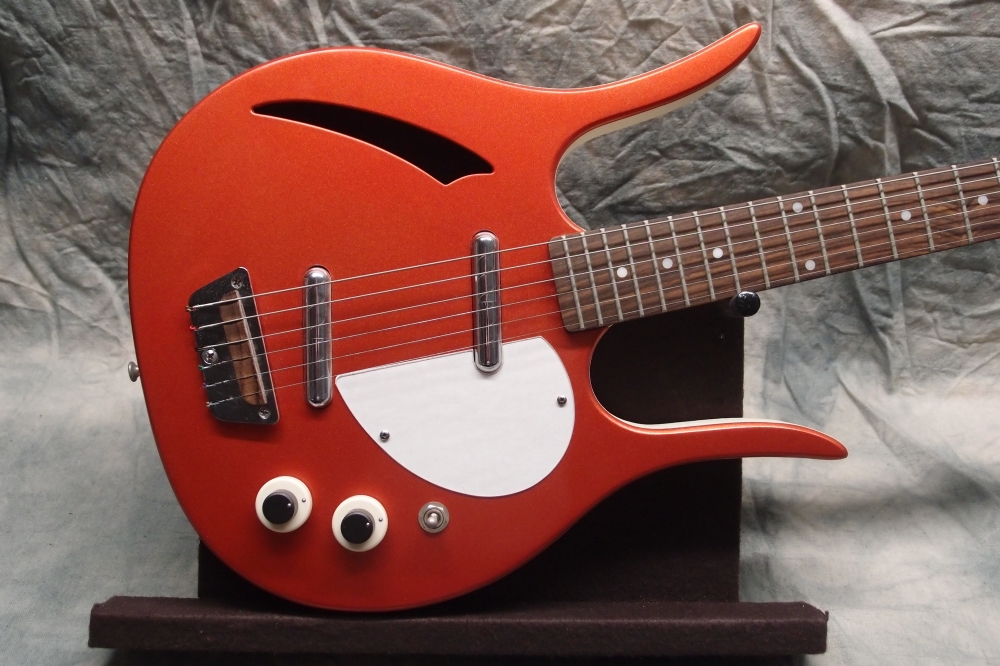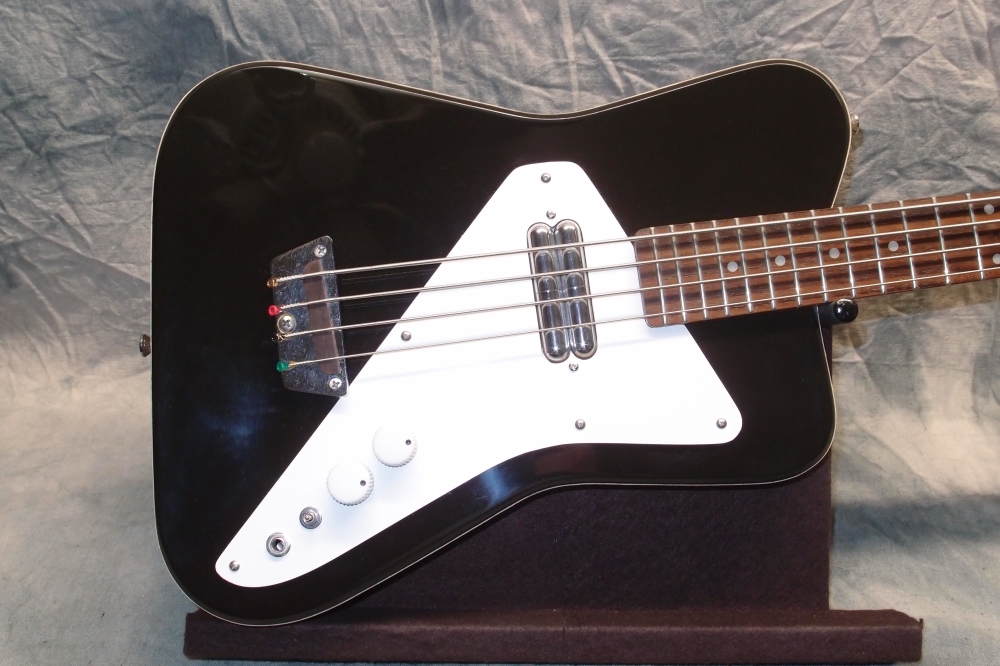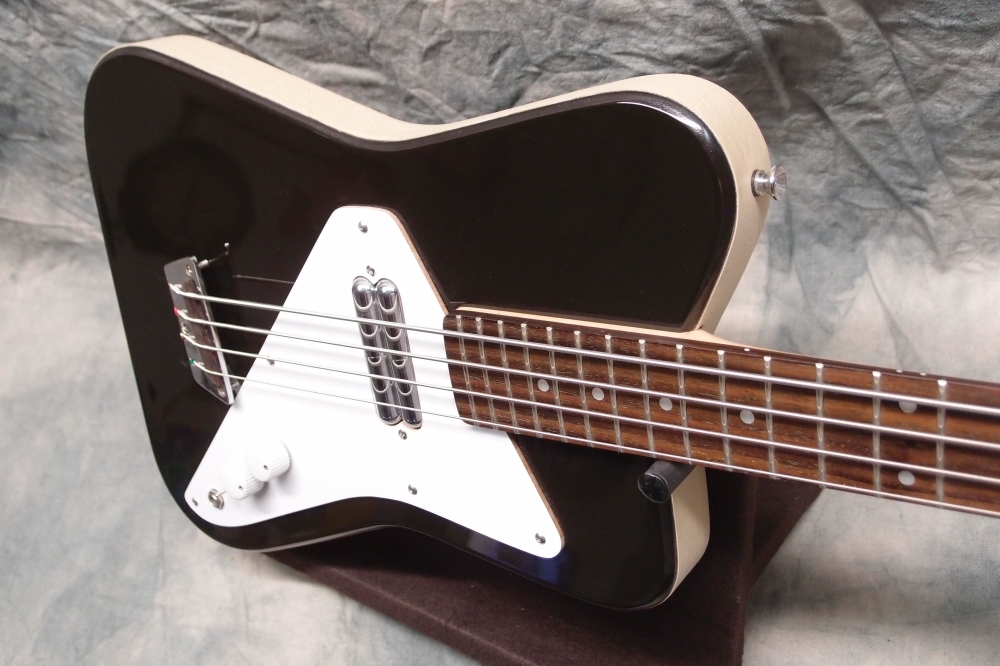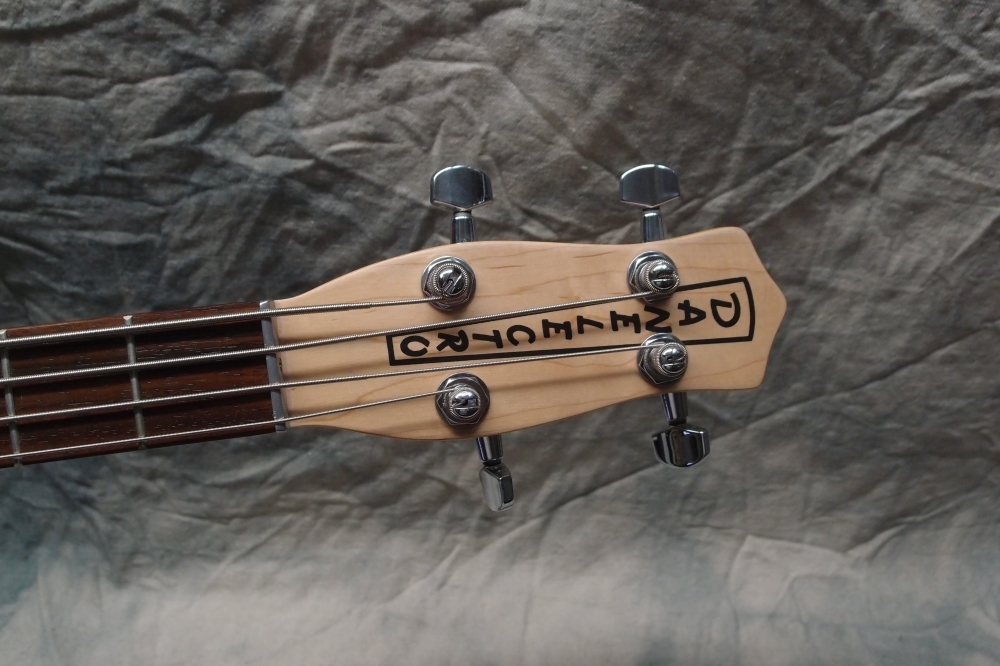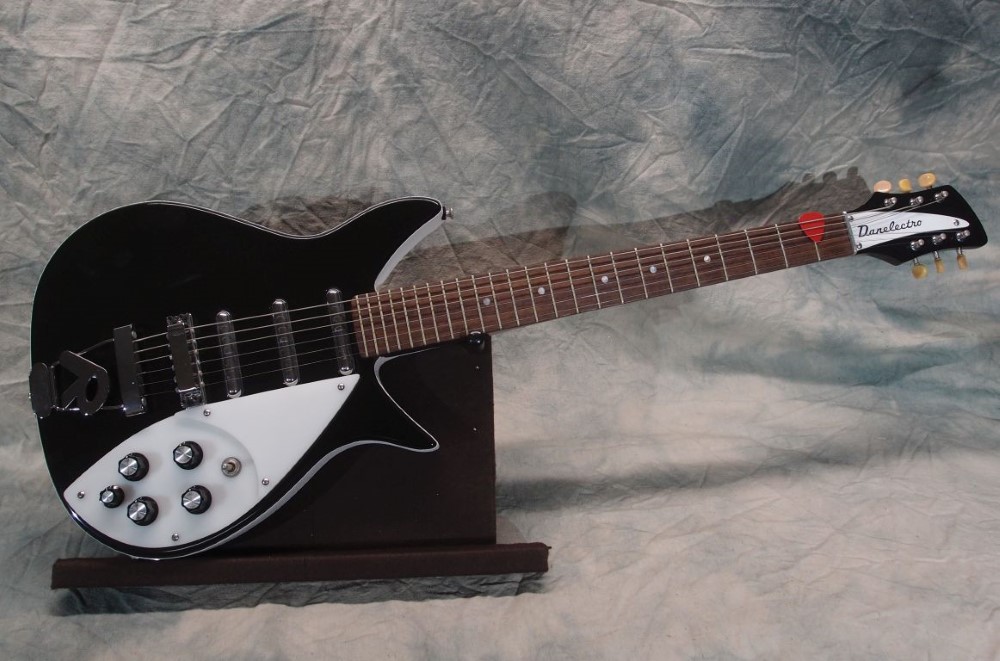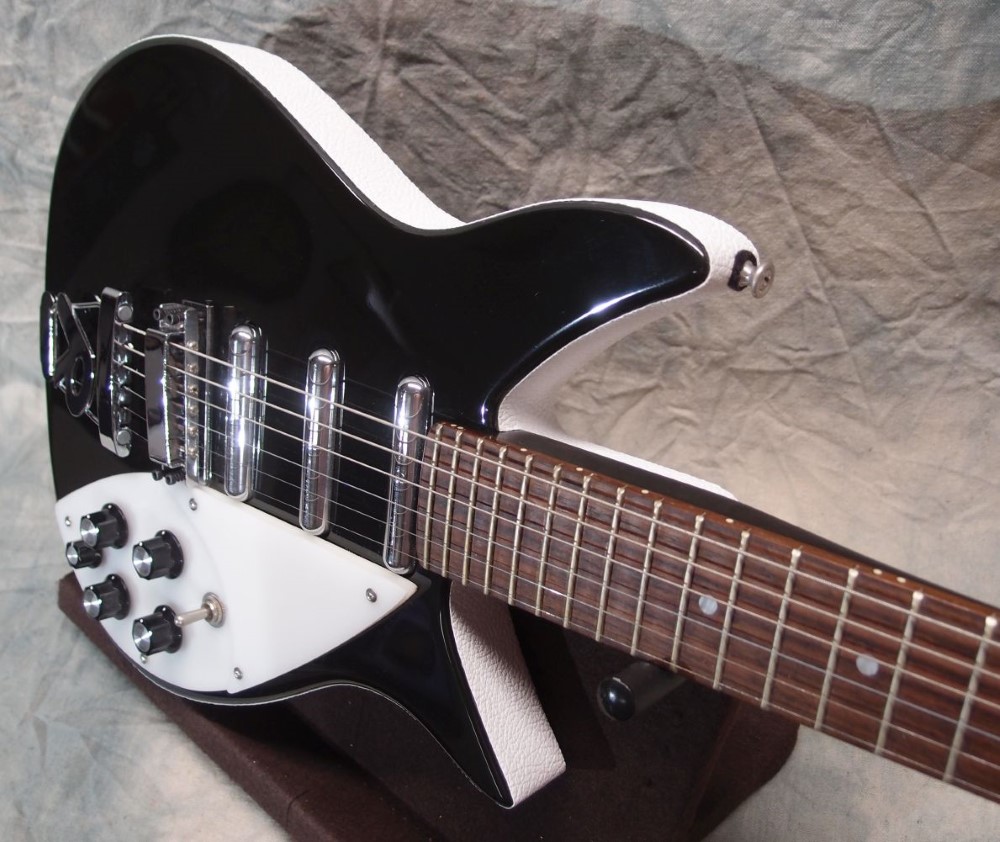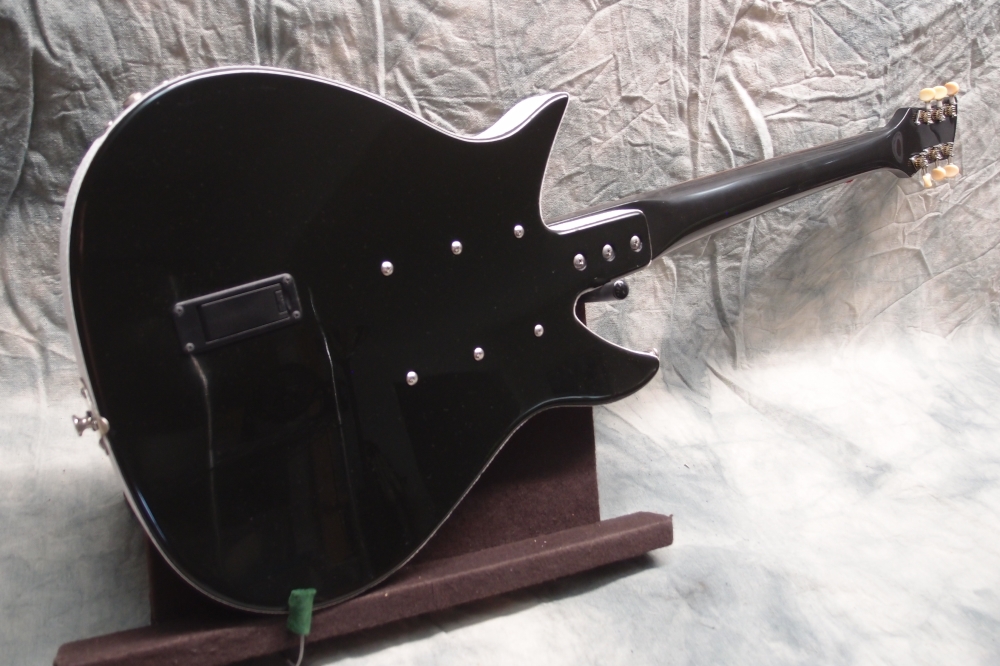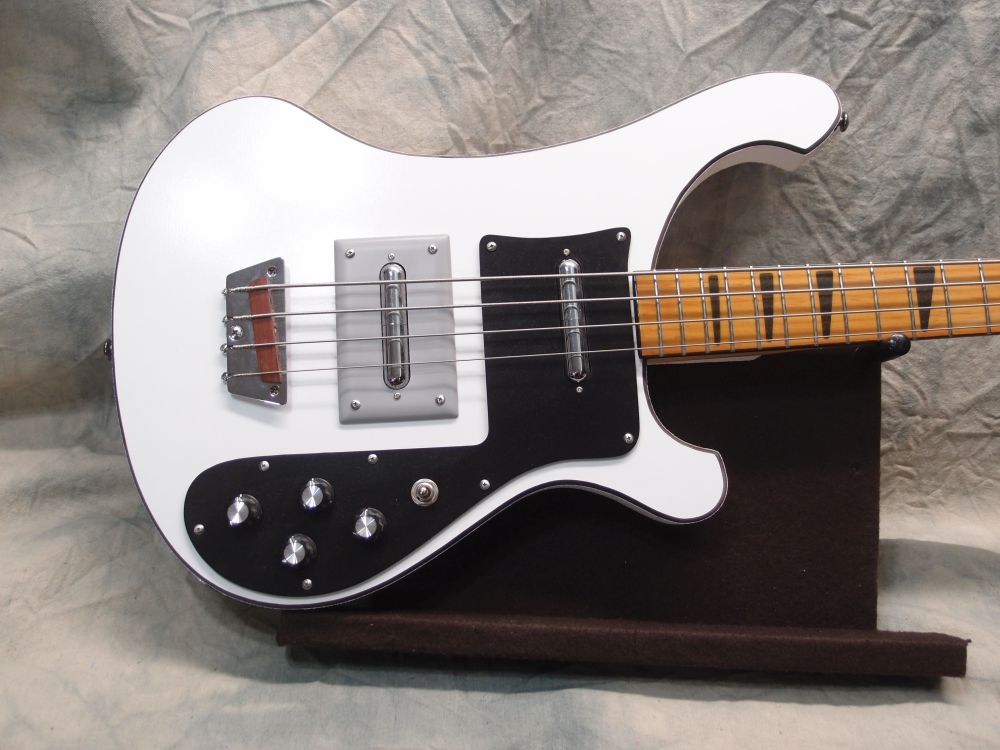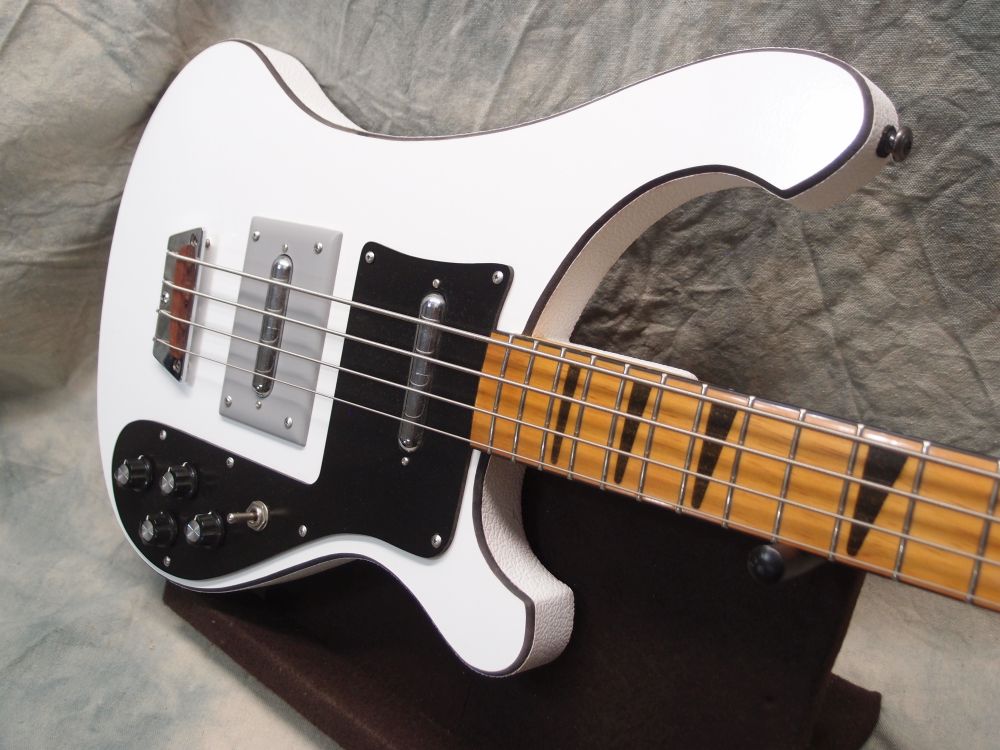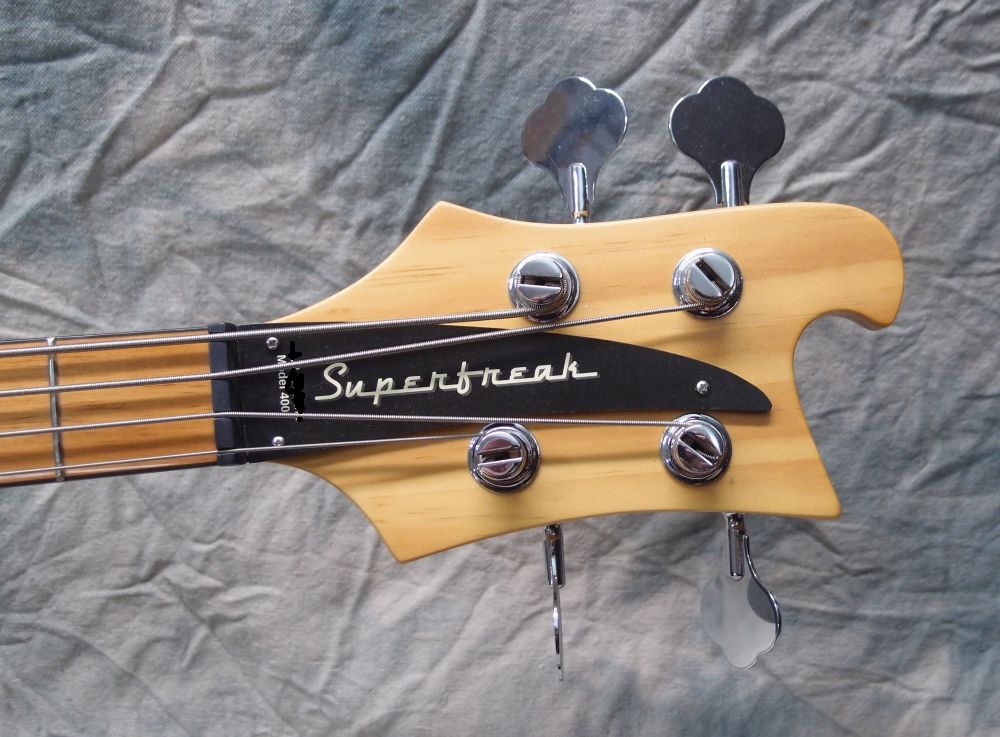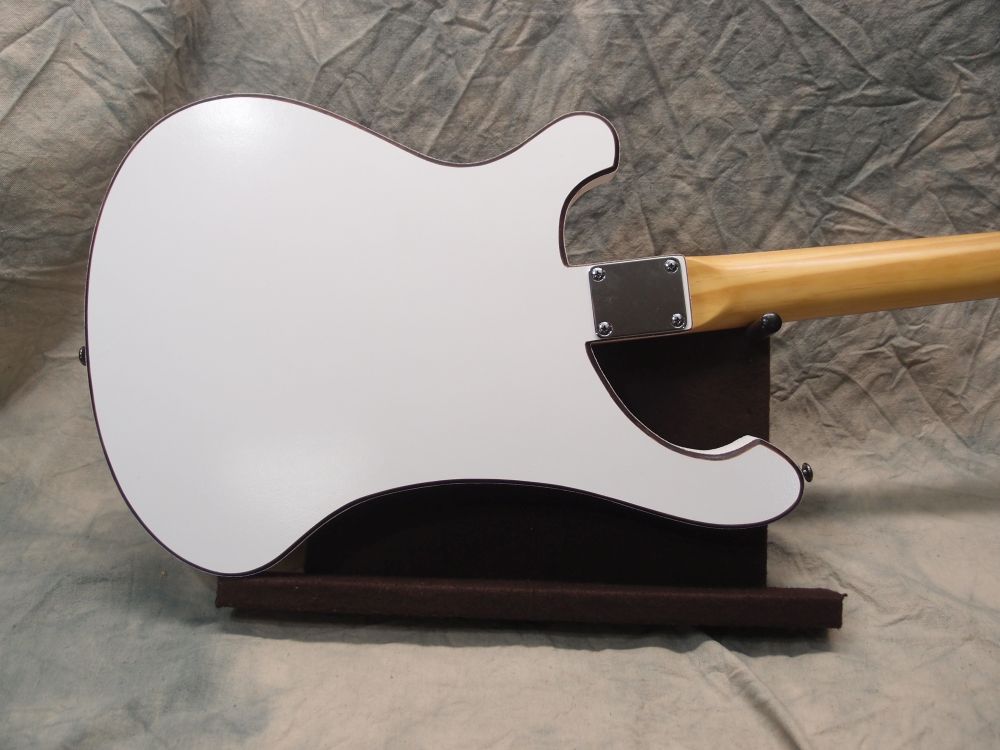Masonite faces over a hollow plywood core is the standard modern Danelectro construction, and is an excellent and very economical way to build a guitar.
This twelver is a mashup of a number of different models. The body is Danelectro-style masonite over chambered plywood, with Tolex binding. The headstock is interleaved Rickenbacker, the bridge is more like a Gibson, while the overall style is my typical Audiovox.
More: Audiovox 12-String Guitar ...
This one is a body-twin to the 12-string, but with a 30" bass neck. Everything about it is Danelectro - lipstick pickups wired in series, stacked controls, masonite pickguard, Danelectro bridge. The body is masonite over chambered plywood, oil-based poly over pearl paint.
More: Audiovox Danelectro-Style Bass ...
This is the biggest of the Audiovoxes, weighing in at a full 12 pounds, with a 36" scale. The neck is a Brazilian Cherry (Jatoba) floorboard over maple, with a straight cutout headstock. There are over 100 marker dots. The body is veneered masonite over solid plywood, with Danelectro-style Tolex binding. There are also strap buttons, this instrument can be played vertically or horizontally.
More: Audiovox Electric Upright Bass ...
This one is almost identical in construction to the Danelectro-style - masonite over chambered plywood body, masonite pickguard. The neck is purpleheart over maple, with plastic fret lines. The soundhole merely serves as a pickup mount, and the pickup was just insurance against never getting the intended piezo system to work. Eventually, I did get it to work, the piezo is incorporated in a modified bridge, and sounds great. 30" scale.
More: Audiovox Fretless Bass ...
Built as a testbed for a number of ideas:
More: Cowbell Bass Guitar ...
This is an Evets '90s-vintage original reissue, made in Korea. These reissues are actually much better instruments than the originals from the 1960s. While a copper-burst would be more authentic, I like the sky blue better. The newer reissues are even more true to the originals.
More: Danelectro Longhorn Bass ...
Another early build for me - 2010, a reissue Danelectro neck on a built body. The finish is pearl automotive acrylic lacquer. The pickguard is actually clear with a piece of paper under it.
More: Danelectro Longhorn Guitar ...
The body was traced directly off the guitar, finished in very dark brown poly with tan Tolex. The neck is a reissue that has lain around for years. The bridge was originally left-handed, a few minutes with a file and it was right-handed. The double lipstick is switchable series/parallel/single-coil, for some variety. This is my first dry-erase pickguard.
More: Danelectro Pro-1 Bass ...
A faithful reproduction of John Lennon's Rickenbacker, but built as a Danelectro. Masonite over hollow plywood body. Poplar neck. Passive electronics with active distortion on the fifth knob.
More: Rickenbacker 325 Guitar ...
This one is kind of a joke and an experiment in just how cheap you can build a guitar. The body is dry-erase board over plywood - no finish - with Tolex side binding. Dry-erase board is Masonite covered with Melamine. The neck is 100% Radiata pine, even the fretboard. The "inlays" are glitter and CA glue. The pickguard is the other side of the dry-erase board - 'chalkboard'. The pickup mount is a 57 cent switch plate.
More: Rickenbacker 4001 Bass 1 ...




